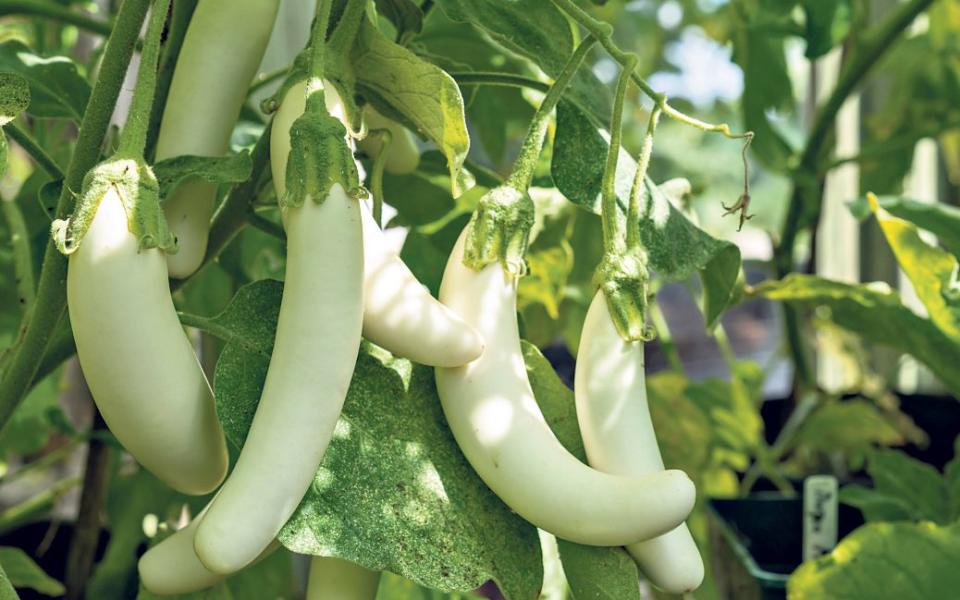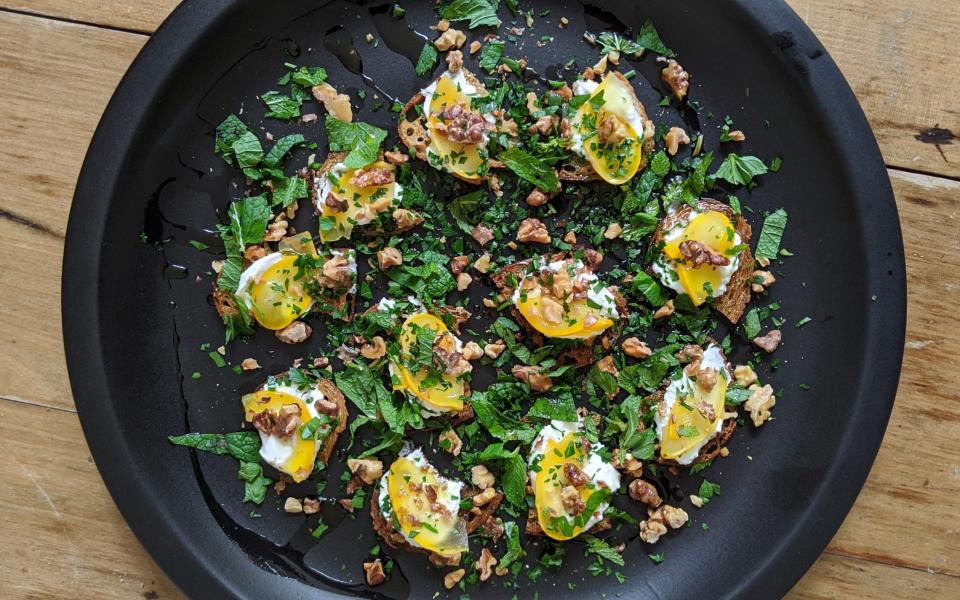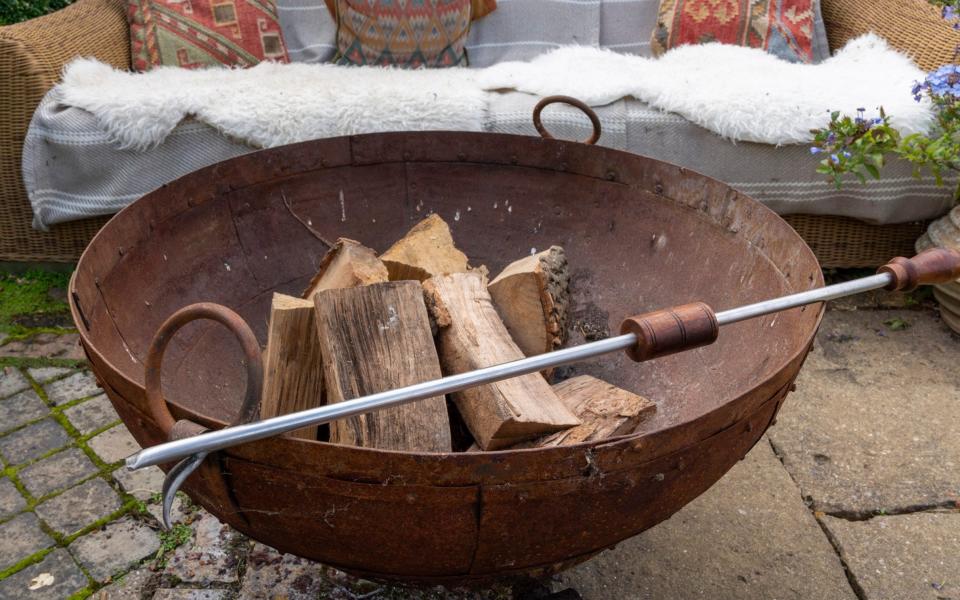My month in the garden: what to do with autumn squash, setting up a garden party and autumn tips

With our erratic weather consisting of an exotic medley of droughts and deluges, it seems that the best way to help your plants and garden is to get the soil in good shape. Talking to Tim O’Hare, a soil scientist who works all over the world, advising on soils from Wisley to Oman via the Olympic Parks, it seems current research on soil management, in gardening terms, turns a lot of perceived wisdom on its head.
I cannot remember the number of times I have heard gardeners being recommended to dig a massive deep trench when planting a hedge and fill with good soil and well-rotted manure. And, when planting big trees, to take out metre-deep pits, again to be filled with topsoil and manure. But putting topsoil into a depth greater than 30-40cm when planting anything is detrimental.
Soil needs air, and it gets starved of oxygen, becomes anaerobic, below this depth: the aerobic bacteria die off and anaerobic bacteria develop. These anaerobic bacteria produce methane and ammonia, which give rise to toxic conditions. The tree roots become short of oxygen, they cannot take up food and water and so they suffocate.
Instead, O’Hare recommends just using topsoil for the top 30-40cm when planting. Only dig as deep as you need to accommodate the plant’s roots, or the tree’s rootball. The more you dig soil, the more you ruin the structure, and it is far easier to dig the minimal amount.
Digging disrupts the all-important top 70-100mm, which contains the valuable microorganisms, mainly bacteria and fungi, and digging reduces the precious population of earthworms. When O’Hare was supervising the planting of huge trees at the Olymic Park, trees with trunks 60-100cm in circumference, they filled the lower portion of the pits with compaction-resistant subsoils or washed sands and the topsoil was limited to the top 30-40cm.

For soil improvers, O’Hare is a big fan of green compost (formerly called green waste, recycled from garden waste). I have been using this for well over 10 years at home and on other gardens and find it a brilliant soil improver. Like most compost, it is naturally quite alkaline, but slowly – after three or four years – the soil it is applied to will settle back to its natural pH.
Green compost has a high potassium content, generally thought to promote flowering and fruiting, and it is a slow-release source of nitrogen, phosphorous, secondary nutrients and trace elements plus masses of beneficial fungi and bacteria. When forming “manufactured topsoil”, green compost is often blended with quarry overburdens (the unwanted sand deposits from quarries) to form a clean, organic rich medium for generating good growth.
It is often perceived that adding green material or unbroken-down materials such as mown grass clippings to soils as a surface mulch robs the soil of nitrogen as it is broken down.
O’Hare believes this does not occur as long as you do not dig it in. It will slowly break down, through the activity of earthworms and the microorganisms in the soil. Green shreddings from tree surgeons, with leaves and twigs all mulched up, are a great, inexpensive (or often free if the tree surgeon is working near by) mulch, ideal for boosting organic matter, nutrients, keeping the soil free of weeds and holding in the moisture.
So perhaps if we leant on our spades a bit more, rather than dug with them, we would do our gardens a big favour.
Aubergines

I have a bumper year of these, having tried four different varieties sown back in mid-January on the windowsill. Having previously said new varieties are not bitter, I have now discovered that some still are. White Knight F1 are definitely the most prolific. They are ready when about 10cm long, and I have had more than 10 fruits per plant and am still picking lots more.
These have a mild flavour, no salting necessary. Green Knight F1 is equally prolific though starting fruiting later, but it is very bitter: salting first is essential. Both are bred by Burpee. Farmers Long has a good flavour but is far less prolific. The traditionally coloured Black Enorma has a good strong flavour, but again is less prolific.
Those grown in my insect-free vented Keder polytunnel did not start to set fruit until I opened up the doors. Those grown in my glasshouse (which has no vents, just doors and is next to my beehives) were ready for picking in mid-July. So insect pollination is pretty vital.
Pickled squash, goats curd and walnut crostini
By Charlie Hibbert, head chef at Thyme

SERVES
Makes enough crostini for six to eight people. Jar any extra pickled squash.
INGREDIENTS
For the pickle
500ml cider vinegar
400g caster sugar
250ml water
4 sprigs of thyme
1 red chilli
1 tsp fennel seeds
10 black peppercorns
1 small squash (onion squash or similar), cut in half, deseeded and sliced into thin half moons
For the crostini
¼ loaf of stale sourdough, sliced into thin slices
2 tbsp olive oil, plus more to serve
250g goat’s curd (or ricotta)
A large handful of walnuts, chopped and toasted
A small handful of chopped parsley
A small handful of torn mint
Method
Preheat the oven to 160C. Place all of the ingredients for the pickle – except the squash – in a medium-sized pot and place on a medium heat. Bring to a simmer. Add the squash, making sure that it’s covered by the pickle liquor. Simmer until the squash is soft but still holding its shape, this takes around 10-15 minutes. If you are preserving the squash for later, spoon the pickled squash into a sterilised jar while still hot, and seal. If you are using the squash immediately, allow it to cool completely.
Place the sourdough slices on an oven tray and dress in the olive oil. Cook in the oven for 12 minutes or until the crostini are golden brown and crisp.
Spread each crostini with the goat’s curd, and then top with a piece of pickled pumpkin. Arrange the crostini neatly on a plate, and scatter with the walnuts, parsley and torn mint. Dress with a final drizzle of olive oil and serve.
Garden Party

At time of writing, The Great British Garden Party will still begin tomorrow and last until next Sunday, despite new social restrictions coming into force in England. If you were planning a gathering of no more than six, or several of that number at different times of the day, you can continue.
It is the brainchild of the NGS to boost funds for the nursing charities they have loyally supported for the last 100 years or so. As we all entertain at the last minute in these strange times, you still have time to go online and get some bunting, posters, ideas and more.
The future of garden parties is uncertain, but you can only relax out there if you have potential to have some heat, shelter or shade, lights if necessary and of course atmosphere!
Having given an outdoor Christmas party in mid-December, I have learnt about fires, and know there is often no fire without smoke.
Gathering around a Kadai fire bowl and chatting well into the small hours makes an evening special, but you need to bring your boy-scout skills to the fore. The position of the fire bowl is important, in as sheltered a space as possible. Use seasoned, kiln-dried wood, and just a few small 8cm to 12cm pieces to start with, followed by larger pieces, added gradually. Never overload the fire in one go.

This keeps the flames active and the flames showing and burning well without smothering the fire with fresh wood. Always light it around half an hour before your first arrivals. Kadai does a blow poker, which helps fan the flames and stop the smoke. If you have an exposed garden, maybe opt for a chiminea instead. I got Philip, a local metal worker who runs Manor Welding to make me one, as good-looking examples are in short supply.
For cover, a simple shelter can be made using posts on the corners, which could be stone, metal or timber with basic timer/ metal beams for the frame for the roof. We then sometimes put a sandwich of heather panels top and bottom with corrugated plastic in the middle, all laid to a slight fall.
This rather “Heath Robinson” approach looks quite acceptable and is not expensive. One such structure has survived well for more than 20 years with only the top heather layer being replaced. At home, we have a white waterproof fabric awning (by TedGem), but when the wind gets going it can generate quite a force, so the structure needs to be able to withstand this.
There is tremendous scope for decorating your garden. For this time of year, we often use chili plants hung with fruit, and big vases of brash magenta dahlias, scarlet amaranthus and lime gladioli. I wrap the plastic plant pots with hessian, or go to the other extreme and apply transfer gold leaf to form some amazing centrepieces.
This is pretty simple to use and, as gold leaf is real gold, it stays stunningly shiny forever. Available from Cornelissen.
Outdoor lighting by lanterns is my favourite. Kadai’s Arabian lanterns are 50cm high and fabulous. Fairy lights or rope lights hung on a string are inexpensive and great to play around with: over pergolas, on buildings and archways they can be used to highlight and add atmosphere.
All that remains is food. Many of the NGS gardens are famous for their fabulous cakes and teas – I am afraid I ran out of time, having spent too long in the garden and not long enough in the kitchen. But a friend who works for Fiona Cairns came to the rescue and turned up with the best spread of beautiful and delicious cakes I have ever seen. Our table has never heaved so much before. You can see the spread on my YouTube video Garden Party Time.
Mundane maintenance
Many gardeners have found this year’s growth overwhelming, no doubt caused by the exceptionally early growing season and the intermittent deluges. Mowing and hedge-cutting are often the big issues. Robotic mowers, meadows, sheep and flails for hedges have helped me massively this year!
Watch Bunny’s latest YouTube videos:
How to Party in the Garden All Year Round
How I kill Perennial Weeds – Forever

